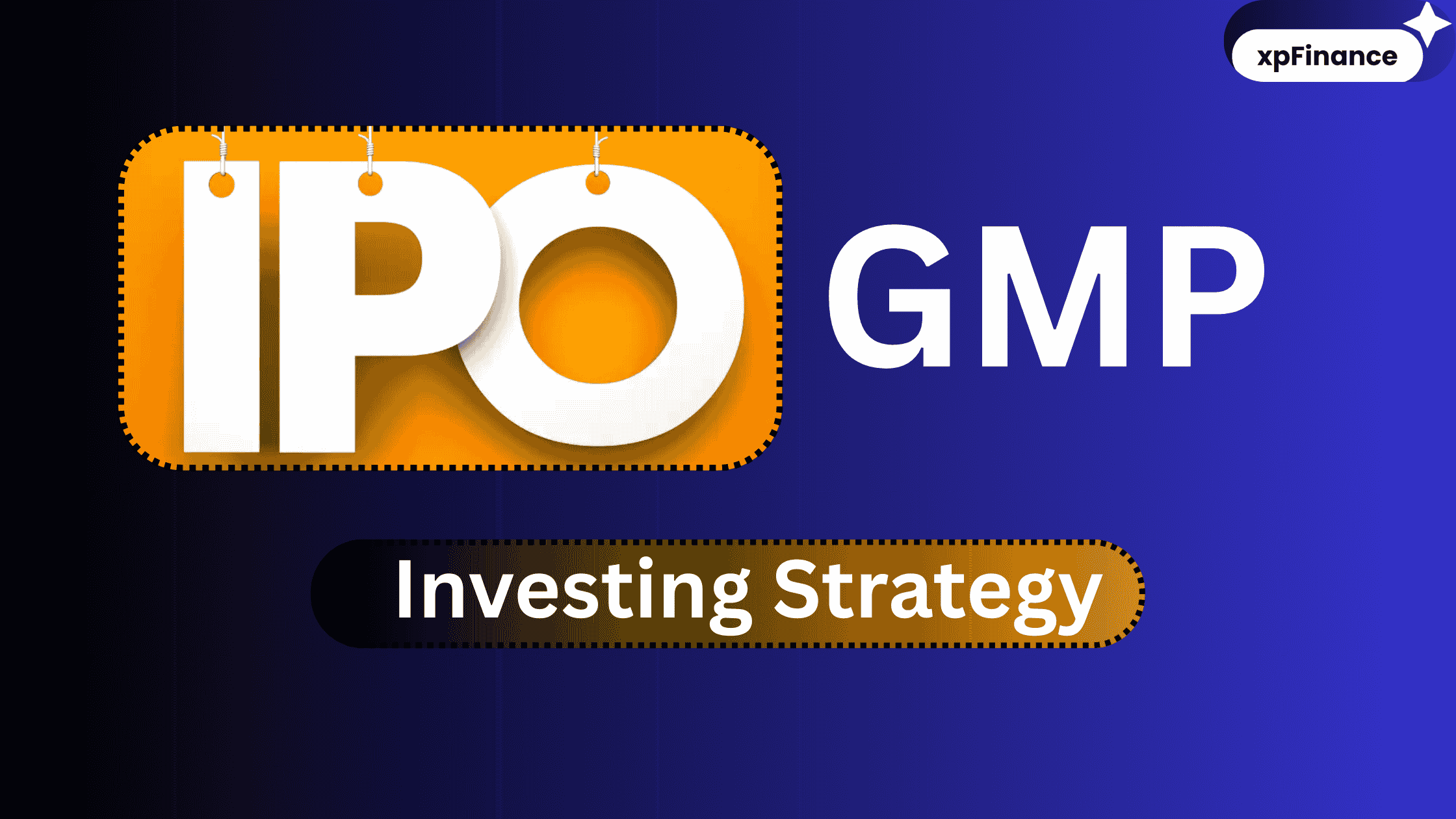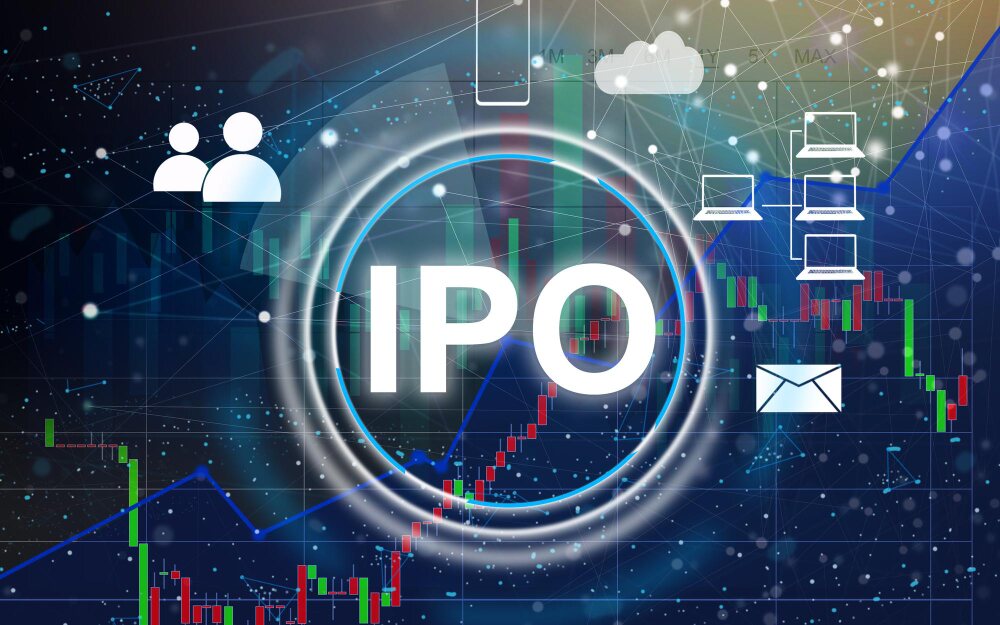
Imagine this: A brand-new company is going public. The news is buzzing, investors are excited, and everyone is curious—at what price will the stock list when it finally hits the stock exchange?
Some say it’ll open at a big premium, others think it might struggle. But in the middle of this excitement, one little metric becomes the talk of the town—IPO GMP (Grey Market Premium).
If you’re new to IPO investing, you’ve probably heard of GMP in WhatsApp groups, Telegram channels, or from fellow traders. Some investors treat it like a crystal ball that predicts how the stock will perform on listing day. But is it really that simple? And more importantly, should you trust it when making your IPO investing decisions?
Let’s take a deep dive into IPO GMP, why it matters, how it works, and how you can use it wisely as part of your IPO investing strategy.
What exactly is IPO GMP (Grey Market Premium)?
Think of IPO GMP as the “unofficial betting odds” for an IPO.
When a company launches its IPO, the issue price is fixed—for example, ₹100 per share. But in the grey market (an unofficial market outside the stock exchange), investors start trading those IPO shares even before listing. The difference between the IPO issue price and the grey market price is what we call GMP.
For example:
- IPO Issue Price = ₹100
- Grey Market Price = ₹120
- IPO GMP = ₹20
This means investors in the grey market are willing to pay ₹120 for a share that is being issued at ₹100. A positive GMP signals strong demand and optimism, while a negative GMP (say, -₹10) reflects weak sentiment and expected poor listing performance.
So in short, GMP is the market’s mood swing captured in a number.
How is IPO GMP Determined?
Unlike official market prices, GMP doesn’t flash on your trading app. It’s entirely demand and supply driven in an unregulated, informal market. Here’s what fuels it:
- Investor Demand – If too many people are eager to grab the IPO shares, GMP goes up.
- Company Fundamentals – Strong financials, growth prospects, and brand reputation boost confidence.
- Market Conditions – If the overall stock market is bullish, GMPs tend to rise. In bearish times, even good IPOs can struggle.
- Sector Sentiment – Hot sectors like tech, defence, or renewable energy often see higher GMPs compared to traditional sectors.
Basically, GMP is a real-time reflection of how investors perceive the upcoming IPO.
Why is IPO GMP Important?
You might be thinking: Alright, GMP sounds interesting, but why should I care as an investor?
Here’s why:
- Predicts Listing Gains: A high IPO GMP suggests that the stock may open at a good premium on listing day, giving investors quick profits.
- Reveals Market Sentiment: GMP acts as a barometer of excitement (or lack of it) around an IPO.
- Guides Decision Making: If GMP is consistently high, it may encourage investors to apply for the IPO. If negative, it can be a warning sign to stay away.
But remember—IPO GMP is not a guarantee. It’s just an indicator, not the final word on stock performance.
Story Time: How Investors Use GMP in Real Life
Let’s take an example.
When Company A launched its IPO with a price band of ₹90–100, the GMP in the grey market was hovering around ₹40. That meant investors were expecting the stock to list at ₹140 (₹100 issue price + ₹40 GMP).
On listing day, the stock actually opened at ₹145. Those who tracked the GMP were not surprised—it was almost spot on.
Now consider Company B. Its IPO was priced at ₹200, but GMP was negative (-₹15). This meant the grey market expected it to list around ₹185. True enough, the stock opened weak at ₹190.
These real-life cases show why many traders swear by IPO GMP while planning their investing strategies.
How are IPO Shares Traded in the Grey Market?
Here’s where things get interesting.
The grey market is completely unofficial and unregulated. No stock exchange, no SEBI, no apps—just word-of-mouth deals between brokers and investors.
- Deals usually happen over phone calls, WhatsApp, or SMS.
- Prices are decided based on assumptions about how the stock will list.
- Investors can buy or sell IPO applications (also called “IPO kostak rate”) even before allotment.
But this comes with risks:
- No legal protection: If one party defaults, there’s no regulator to resolve disputes.
- Price volatility: GMP can change overnight if the market mood shifts.
So while grey market trading can give clues, it’s not for the faint-hearted.
How GMP Influences IPO Pricing and Demand
IPO GMP plays a bigger role than just gossip—it often influences both companies and investors:
- Investor Sentiment – A high GMP creates excitement, pulling more investors into the IPO.
- Pricing Strategy – Underwriters and companies track GMP closely. If GMP is strong, they may price the IPO at the upper end of the price band.
- Speculative Trading – Traders often apply for IPOs purely based on GMP, hoping to book listing gains.
- Risk Indicator – A low or negative GMP warns investors about weak demand, signaling potential risk.
- Market Comparisons – GMP helps investors compare new IPOs with past ones in the same sector.
Factors That Affect IPO GMP
Not all IPO GMPs are created equal. Here are the main factors that move it:
- Overall Market Mood – A bullish market pushes GMPs higher. A bearish one drags them lower.
- Company Strength – Strong revenue, profitability, and brand reputation = higher GMP.
- Sector Buzz – Trending sectors (tech, renewable, defence, fintech) attract higher GMPs.
- Demand-Supply Balance – If oversubscription is high, GMP tends to rise.
- Regulatory Environment – Positive policy changes can fuel optimism; negative ones can dampen sentiment.
Risks of Relying Solely on GMP
Here’s a truth bomb: IPO GMP is not foolproof.
Many investors blindly follow GMP, only to be disappointed when the stock doesn’t live up to the hype. Some common risks include:
- Volatility: GMP can swing wildly in the days before listing.
- Speculation Driven: It’s based on rumours and assumptions, not always fundamentals.
- Mismatch on Listing Day: Sometimes, despite a high GMP, stocks list flat or even below issue price.
Example: A company shows a GMP of ₹100, but due to a sudden market crash, it lists flat. Those who invested only on GMP end up stuck.
That’s why smart investors always combine GMP analysis with fundamental research—looking at balance sheets, sector outlook, and management quality.
Significance of GMP for Traders and Investors
If used wisely, IPO Grey Market Premium can be a powerful tool in your investing toolkit. Here’s how:
- Insight into Potential Gains – Helps estimate possible listing price.
- Decision-Making Tool – Guides whether to apply for an IPO or not.
- Timing Strategy – A rising GMP can indicate the right time to enter.
- Risk Awareness – Negative GMP works as a red flag.
- Comparative Analysis – Helps investors choose between multiple IPOs launching around the same time.
Interpreting GMP Trends
Learning to read GMP trends is an art. Here’s how traders do it:
- Rising GMP: Signals increasing investor confidence, usually leads to strong listing.
- Falling GMP: Suggests fading interest, higher risk of weak listing.
- Stable GMP: Indicates market has already priced in expectations.
Tracking these trends helps investors gauge whether excitement is building up or cooling off before listing day.
Final Thoughts: Should You Use GMP in Your IPO Investing Strategy?
The IPO Grey Market Premium (IPO GMP) is like a sneak peek into how the market feels about a new IPO. It’s exciting, useful, and often accurate—but not 100% reliable.
If you’re an investor, here’s the best way to use it:
- Use GMP as a sentiment indicator, not as the only decision-maker.
- Always check the company’s fundamentals, industry outlook, and valuations.
- Stay cautious—remember, the grey market is unregulated.
In the end, IPO GMP is a tool to sharpen your IPO investing strategy. But the real edge comes from combining GMP with research, patience, and risk management.
So the next time someone asks you, “What’s the GMP for this IPO?”—you’ll not only know the number but also understand what it really means for your investing journey.
IPO GMP FAQs
1. What is IPO GMP (Grey Market Premium)?
IPO GMP is the unofficial premium at which IPO shares trade in the grey market before listing. It indicates investor sentiment and expected listing price.
2. How is IPO GMP calculated?
GMP is calculated by subtracting the IPO issue price from the grey market trading price.
Example: Issue price ₹100, grey market price ₹120 → GMP = ₹20.
3. Why is GMP important for IPO investing?
GMP helps investors gauge demand, predict potential listing gains, and understand market mood around an IPO. However, it’s not a guaranteed indicator.
4. Is investing based only on IPO GMP safe?
No. Relying solely on GMP is risky since it is unofficial, speculative, and unregulated. Investors should also check company fundamentals and market conditions.
5. What factors affect IPO GMP values?
Key factors include overall market conditions, company financials, industry trends, investor demand, supply of shares, and regulatory environment.

